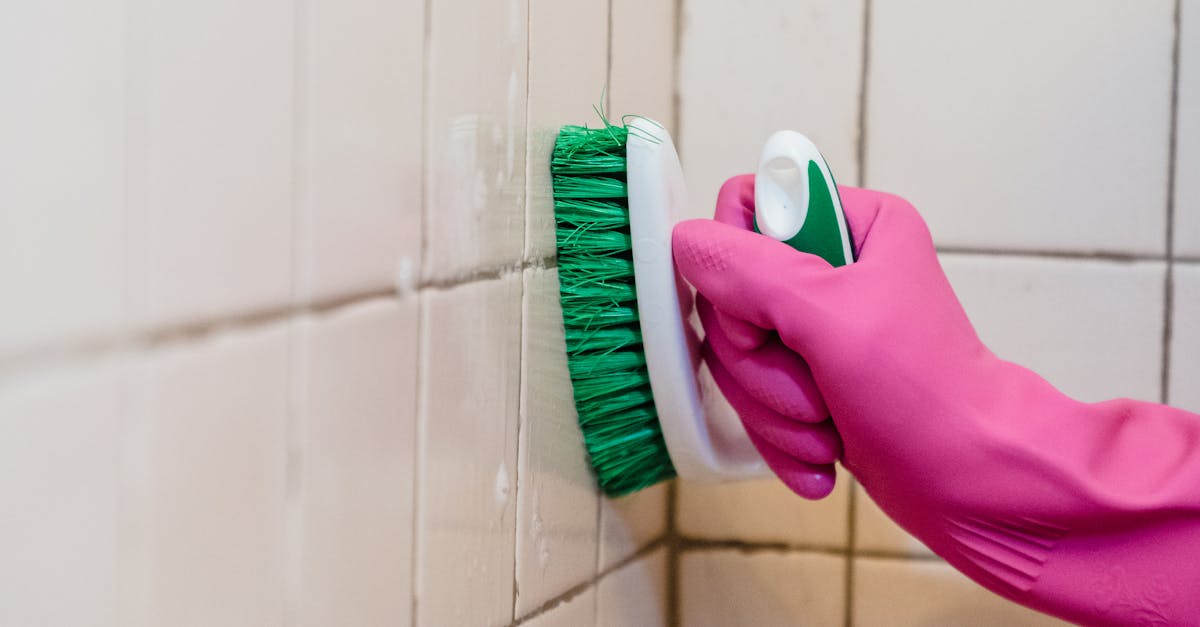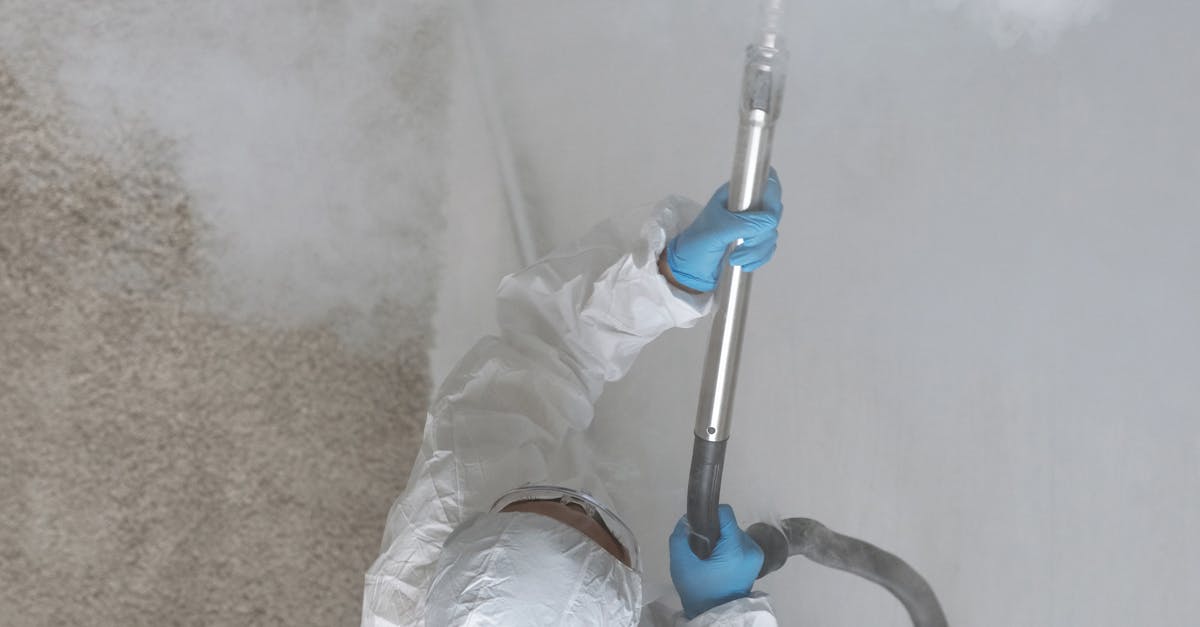
Table Of Contents
At Dry Fast, we understand the urgency and importance of addressing mold issues in your home or business. Our Mold Remediation service is designed to identify, contain, and effectively remove mold infestations safely and efficiently. We utilize advanced techniques and environmentally friendly products to ensure that mold spores are thoroughly eliminated, preventing future growth. Our highly trained technicians conduct detailed inspections to assess the extent of the problem, followed by a comprehensive restoration plan tailored to your specific needs. With a commitment to restoring your space to a safe and healthy environment, Dry Fast is dedicated to providing top-notch service and peace of mind.
DIY Mold Removal Techniques
Mold can be removed using various effective techniques, making it manageable for homeowners facing minor infestations. One common method involves using a mixture of water and detergent to scrub mold off hard surfaces. For areas affected by porous materials, like drywall or carpets, it often becomes necessary to replace the affected sections entirely. After the initial cleanup, homeowners should thoroughly dry the area to minimize moisture, which contributes to mold growth.
Another helpful technique involves using white vinegar or hydrogen peroxide as natural mold killers. Spray these solutions directly onto the moldy area and let them sit for several hours before wiping them clean. This approach not only eliminates most types of mold but also helps in disinfecting surfaces. Always ensure proper ventilation during the process and wear protective gear, such as gloves and masks, to safeguard against any spores released during cleaning.
Effective Methods for Homeowners
Homeowners can effectively tackle small mold infestations using a few simple methods. One popular approach involves mixing equal parts of vinegar and water in a spray bottle. This solution can be applied directly to the affected areas. Allow the mixture to sit for a while before wiping it down with a clean cloth. Vinegar is a natural mold killer and can help eliminate odors while discouraging future growth.
Another effective method is using a combination of baking soda and water. This mixture can be scrubbed onto moldy surfaces, providing a gentle abrasive action that helps remove stains. Baking soda not only cleans but also deodorizes, making it a dual-purpose solution. Ensuring proper ventilation throughout the home can further enhance these efforts. Keeping humidity levels low is vital in preventing mold from returning, often achieved through the use of exhaust fans and dehumidifiers in high-moisture areas.
Preventing Future Mold Issues
Maintaining a dry environment is crucial for preventing mold growth. Homeowners should regularly check for leaks in roofs, plumbing, and windows. Proper ventilation is also essential, especially in high-moisture areas like bathrooms and kitchens. Installing exhaust fans and using dehumidifiers can significantly reduce humidity levels, creating a less favorable environment for mold to thrive.
Routine maintenance can further help in mold prevention. Cleaning gutters and downspouts ensures that rainwater flows away from the foundation. Using mold-resistant products when renovating or building can also provide an added layer of protection. Regularly inspecting basements and crawl spaces for signs of moisture can catch potential mold issues before they escalate. Simple habits like promptly drying wet clothes and using moisture-absorbing products contribute to a mold-free home.
Best Practices and Maintenance Tips
Regular inspection of vulnerable areas, such as basements, bathrooms, and kitchens, is essential for mold prevention. Pay close attention to hidden spaces where moisture can accumulate. Ensure proper ventilation in these areas by utilizing exhaust fans or keeping windows open when feasible. Properly maintaining humidity levels also minimizes mold risk. Aim to keep indoor humidity between 30 and 50 percent. Utilizing a dehumidifier can be beneficial in maintaining these levels, especially in damp climates.
Routine cleaning can help eliminate mold spores before they take root. Use a mixture of water and vinegar for wiping down surfaces to inhibit mold growth. It’s also wise to address any leaky pipes or water sources immediately to prevent moisture accumulation. Alongside these cleaning efforts, keeping your gutters clean and ensuring proper drainage around your home can further defend against mold invasion. Adopting these best practices creates a safer, healthier living environment while diminishing the likelihood of mold-related issues.
Insurance and Mold Remediation
Homeowners often overlook the complexities of insurance coverage when it comes to mold remediation. Many standard policies include exclusions for mold damage, which can lead to unexpected out-of-pocket expenses. Understanding these exclusions is crucial for homeowners before they experience water damage. Some policies may include mold coverage if the mold is a direct result of a covered peril, such as a burst pipe or severe storm. Reviewing the specifics of one’s policy and communicating with the insurance provider can help clarify what is included.
Filing a claim for mold remediation can be a complicated process. Documentation is key when submitting a claim, including photographs of the damage and records of any previous repairs. Homeowners should also keep meticulous lists of any personal items that were affected. When making a claim, it is essential to act quickly, as timely reporting may affect the outcome. Engaging a professional mold remediation service may provide not only effective treatment but also assistance with the insurance claims process, ensuring that all necessary information is accurately conveyed.
Understanding Coverage and Claims
Homeowners often find themselves confused about the specifics of their insurance coverage when it comes to mold damage. Policies can vary widely between providers, with some including mold-related incidents under general water damage coverage, while others may specifically exclude mold remediation expenses. It is crucial for homeowners to read their insurance policy carefully and understand the definitions, limits, and any specific endorsements related to mold. Contacting an insurance agent for clarification can help avoid unexpected costs.
Navigating the claims process for mold damage can be equally challenging. When filing a claim, documentation is essential. Homeowners should take photographs of the affected areas, keep records of any repairs made, and maintain communication with their insurance adjuster. Detailed records of any mold remediation efforts might also be requested during the claims process. Familiarizing oneself with the policy's requirements for mold claims can streamline the process and potentially result in better coverage outcomes.
FAQS
What is mold remediation?
Mold remediation is the process of identifying, containing, and removing mold from a home or building to restore a safe and healthy environment.
Can I remove mold myself, or should I hire a professional?
While small patches of mold can often be removed using DIY methods, hiring a professional is recommended for larger infestations or for safety concerns, especially if the affected area is extensive or if mold is present in hidden areas.
How can I prevent mold from growing in my home?
To prevent mold growth, maintain proper ventilation, control humidity levels, fix leaks promptly, and regularly clean and inspect areas prone to moisture, such as bathrooms and basements.
Will homeowners insurance cover mold remediation?
Coverage for mold remediation varies by policy and insurer. It’s essential to review your policy or consult your insurance agent to understand what is covered regarding mold damage.
How long does the mold remediation process typically take?
The duration of mold remediation can vary significantly depending on the extent of the infestation, the methods used, and the size of the affected area; it can take anywhere from a few days to a couple of weeks.

